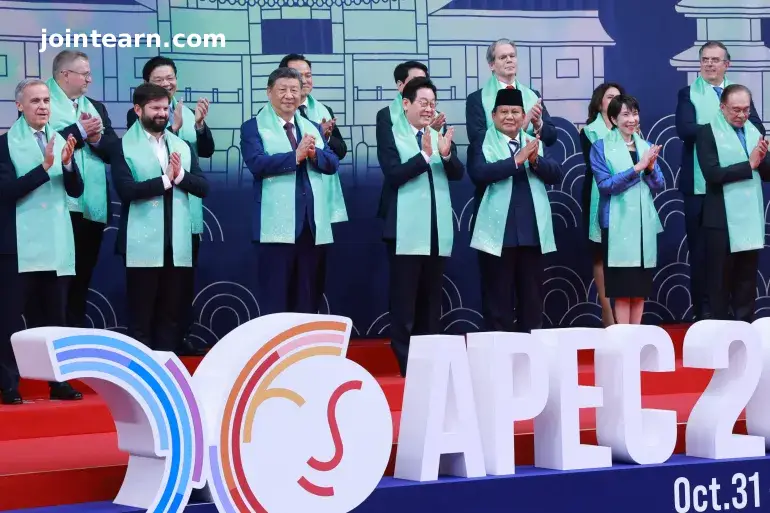
Gyeongju, South Korea – November 1, 2025
Leaders from across the Asia-Pacific region concluded the 2025 Asia-Pacific Economic Cooperation (APEC) summit in Gyeongju, South Korea, pledging support for trade, investment, and economic growth that “benefits all.” The summit was largely defined by a high-profile agreement between United States President Donald Trump and Chinese President Xi Jinping to call a truce in the ongoing US-China trade war, signaling a potential easing of tensions in the world’s two largest economies.
US-China Truce Dominates Discussions
Trump and Xi met face-to-face for the first time since 2019 during the summit, with their discussions focused on stabilizing trade relations amid global economic uncertainty. While the specifics of the truce were not fully disclosed, the two leaders agreed to reduce trade frictions and work toward mutually beneficial cooperation. Xi, emphasizing multilateralism and global collaboration, described the current environment as “increasingly complex and volatile” and stressed the importance of unity among nations.
APEC Leaders Highlight Trade, Investment, and Innovation
In their joint declaration, the 21 APEC member economies—including the US, China, Japan, and South Korea—underscored the importance of “robust trade and investment” for regional growth. The statement highlighted initiatives to:
- Deepen economic integration and market-driven cooperation
- Strengthen capacity building, business engagement, and experience sharing
- Collaborate on emerging technologies such as artificial intelligence
- Address demographic challenges arising from falling birth rates
South Korean President Lee Jae Myung, the summit’s host, noted the turbulent global trade environment:
“The free trade system is experiencing strong turbulence, global economic uncertainty is deepening, and momentum for trade and investment is weakening.”
Navigating a Fraught Diplomatic Exercise
Observers noted that reaching a consensus among APEC members was challenging given the differing positions on trade and global economic policy. Deborah Elms, head of trade policy at Singapore’s Hinrich Foundation, described the negotiation process as “a fraught exercise” and suggested it was remarkable that leaders could agree on a unified declaration at all.
South Korea-China Bilateral Engagement
Beyond the multilateral discussions, President Lee and President Xi held their first bilateral summit since Lee’s election in a snap poll in June 2025. Both leaders emphasized strategic communication, particularly regarding North Korea’s nuclear program, and called for “shared prosperity” in economic relations. Xi described South Korea and China as “inseparable cooperation partners” and urged dialogue and friendly consultations to manage differences.
Lee’s approach represents a more balanced policy toward China compared with his conservative predecessor, Yoon Suk Yeol, who faced domestic and international criticism during his brief attempt to declare martial law in 2024.
South Korea Balances US Security and China Trade
South Korea continues to walk a fine line between the US, its security guarantor, and China, its largest trading partner. The US maintains approximately 28,500 troops in South Korea under a mutual defense treaty, while China accounted for nearly one-fifth of South Korea’s exports in 2024 ($133 billion), with the US a close second ($127.8 billion).
Analysts note that President Lee’s strategy focuses on stability: lowering tensions with China, maintaining strong US relations, and addressing sensitive issues such as maritime disputes and technology security discreetly. Rob York, director for regional affairs at the Pacific Forum, emphasized that Lee is prioritizing diplomatic steadiness while quietly managing underlying challenges with both powers.


Leave a Reply